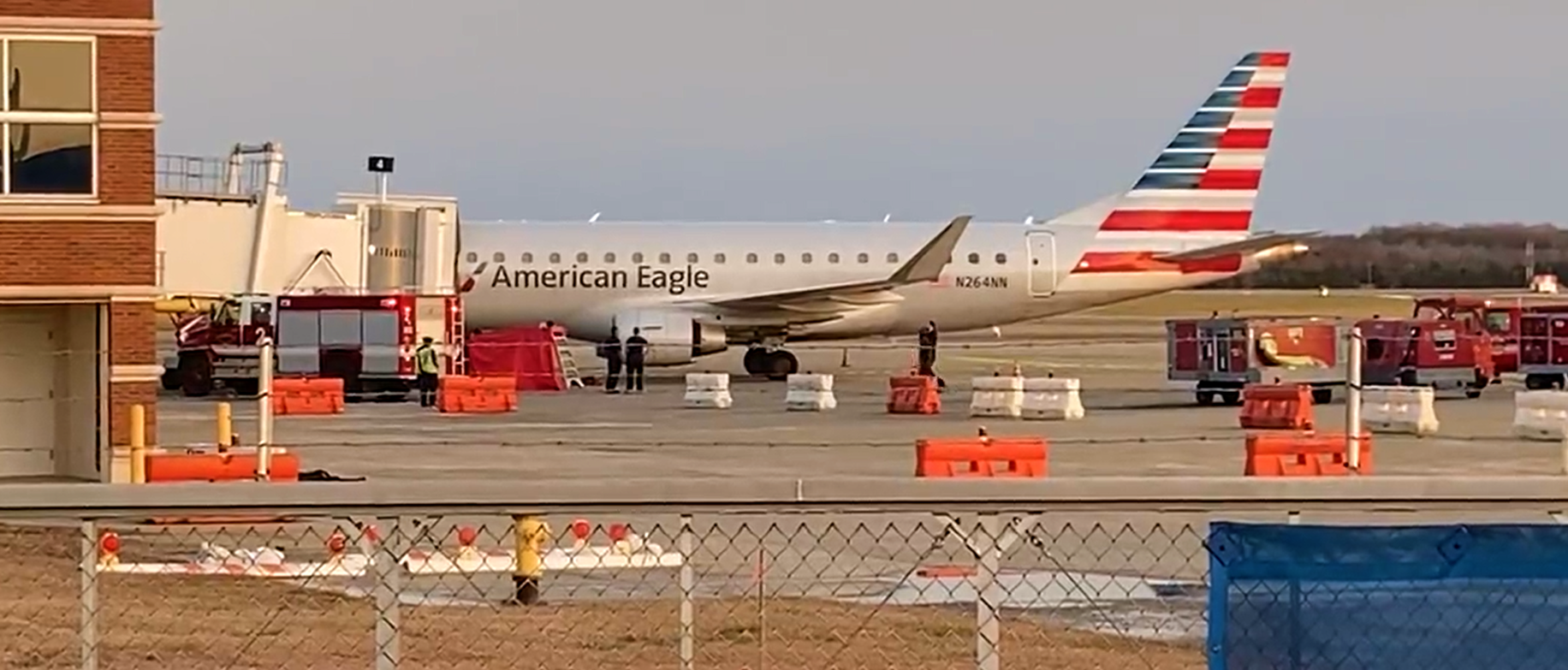


The National Transportation Safety Board has released its preliminary report into the fatal New Year’s Eve ground accident at Montgomery Regional Airport in which a member of ground crew personnel was “ingested into the engine” of a parked aircraft.
It was an Embraer E175 aircraft of the American Airlines Flight 3408 , operated by the Envoy Air Inc. which covers the route between the cities of Dallas and Montgomery.
On that day, the E175 aircraft (N264NN) was operating the flight ENY3408 with an inoperative auxiliary power unit (APU). The flight crew reported that after an uneventful flight they elected to leave both engines running for the required two-minute engine cool down period.
National Transportation Safety Board report read,
"On December 31, 2022, about 1539 eastern standard time (EST), an Embraer 170 airplane, N264NN, was involved in an accident while parked at the gate with one engine running at Montgomery Regional Airport (MGM), Montgomery, Alabama."
The victim, has been identified as Courtney Edwards, a 34-year-old mother of three , was part of ramp personnel for Piedmont Airlines, a subsidiary of American Airlines, when she was killed in the accident, where the running left engine (Number -1 Engine) pulled off her feet and into the engine.
Related Story...
The NTSB report detailed breach of several safety protocols , which could have protected those in the vicinity of the aircraft from injury or death. The report indicates two safety meetings were held shortly before the plane arrived, including a “huddle” just before it reached the gate, to remind the crew that the engines would remain running and that the aircraft should not be approached during that time.
The NTSB report notes that the accident sequence was captured on a surveillance video. The camera recorded four ramp agents during the incident, including one who “appeared walking towards the back of the airplane with an orange safety cone where she disappeared from view.”
The sequence of events, that detailed the victim’s final moments notes,
“The ramp agent from the back of the airplane reappeared and began walking away from the airplane and towards the left wing tip where she disappeared from the camera’s field of view. "
"The marshaller could be seen backing away from the airplane’s open forward cargo door and the ramp agent from the back of the airplane reappeared walking along the leading edge of the left wing and directly in front of the number one engine. She was subsequently pulled off her feet and into the operating engine.”
The surveillance video also showed another missed safety protocol, to stay back while the rotating beacon light of the aircraft was still illuminated.
“Throughout the course of the accident, the airplane’s upper rotating beacon light appeared to be illuminated,” the report detailed.
Seconds before she was sucked into the engine , the ramp agent , who was responsible for chocking the aircraft , had warned other ramp agents including the victim to stay away. The report read,
"Another ramp agent stated that after chocking the nose wheel of the airplane, he observed another ramp agent approach the forward cargo door and he knelt to wave him off. He then observed another ramp agent about to set the safety cone at the rear of the airplane, he yelled and waved her off as the number 1 engine was still running. He observed her as she began to move away from the airplane before he turned to lower the cord for the ground power. Shortly thereafter he heard a “bang” and the engine shut down."
No, this kind of unfortunate fatal accident keep happening in aviation industry, though rare. One such ground accident took place in December 2015 ,when one of the Air India's ground engineers got sucked into the running engine of an aircraft at the Mumbai airport.
That mishap happened when the co-pilot of Mumbai-Hyderabad flight 619 misread a signal and started the engine. The victim, Ravi Subramanian, who was standing close by , got sucked into it at Bay 28 of the Chhatrapati Shivaji domestic airport.
For the Montgomery Regional Airport case , NTSB also mentioned a readout of the carrier’s operating manual as part of its investigation , which stated as below :
The American Eagle Ground Operations Manual, Revision 3 dated July 13, 2022, states in part:
“To Keep Employees Alive and Aircraft Intact, You Will : NEVER approach an aircraft to position ground equipment next to an aircraft or open cargo bin doors until the engines are shut down and the rotating beacon(s) turned off, except when conducting an approved single engine turn."
The Report also highlighted the Warning zones and other aspects of operating engine(s) , which can life threatening , if safety protocols are not respected.
Jet engines spin with powerful speed and are extremely dangerous until spooled down. The area in front of the engine is called the ingestion zone. The ingestion zone for all aircraft types is 15 feet. You must never enter the ingestion zone until the engine has spooled down.
The engine must be spooled down before entering the ingestion zone. This can take between 30- 60 seconds, depending on aircraft type. This applies to both wing and fuselage/tail mounted engines. You must wait until you can clearly see the individual fan blades before entering the ingestion zone.”
Source : NTSB Preliminary report on Accident Number: DCA23LA109
